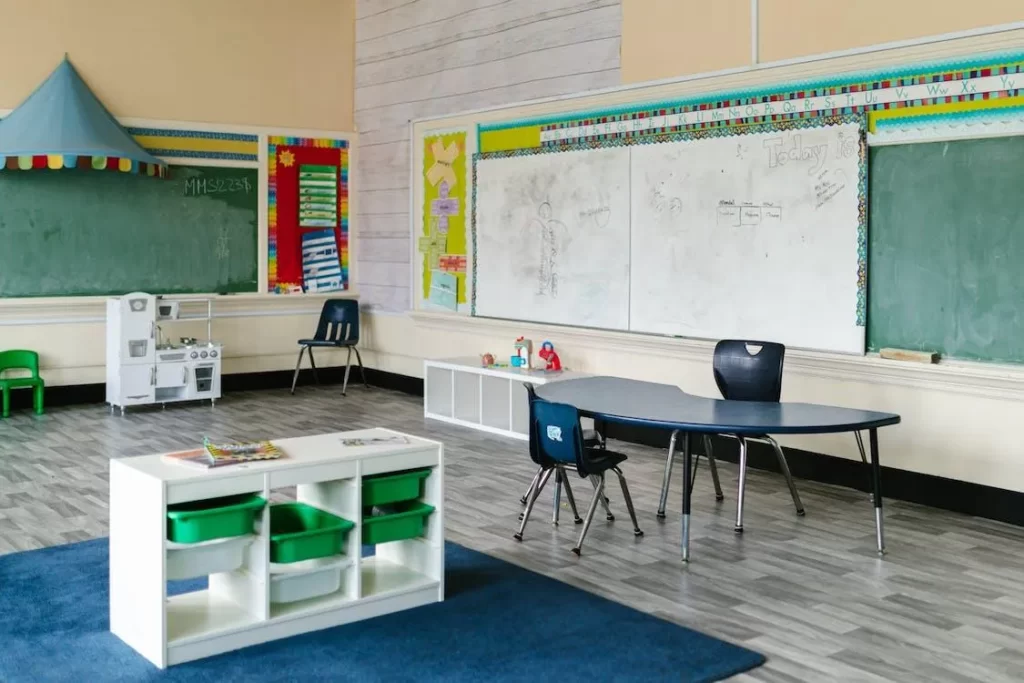How School Interiors Make a Difference
Education curriculum, quality, teaching methodologies, and even the physical definition of schools have evolved over the years. There is a renewed emphasis on holistic learning and development. For a well-rounded approach, equal emphasis is to be given to the syllabus, teaching methods, and infrastructure.
Children spend a major part of their day at school; hence, it is imperative that the interiors be conducive to their growth and well-being. Over the last decade, school interior design has undergone a major revamp. They are tailored to provide students with an optimal environment for learning and nourishing.
School interior design has a tremendous effect on students’ learning experiences. Students need the school space to be warm, comfortable, and adaptable to their changing needs. The learning environment and interiors should be designed keeping in mind the needs of the end-users – the students and the teachers.
Research has shown that students thrive better in an environment that is high on comfort and safety. Let’s break down these factors and understand their impact.

- Comfort
A good classroom should have proper lighting, good acoustics, ergonomic chairs, and tables, and regulated room temperature.
- Well-lit
Natural lighting has been shown to aid better concentration, alertness, and higher mental health. Children who study in schools that have lots of natural light tend to score higher than those in schools with artificial lights.
Also, children who are exposed to natural light during the day tend to sleep better at night.
- Safe
Safety is the topmost priority for all parents and educators. School buildings should have enough free space. Handrails on the staircase, wide pathways, locked terraces, smooth floors, smooth finished furniture, etc are a few measures that would help take care of physical safety.
Apart from physical safety, it is important to take care of mental health too.
Let’s look at the benefits of good school interiors design

- Creates a good impression
A good improved school design will leave a positive impression on parents and visitors. First impressions are a good opportunity to attract students and parents.
- Impact on learning outcomes
Well-designed interiors are not just aesthetically appealing, they have a tremendous impact on the learning curve. Research has shown that well-designed school boosts the learning process and there is an evident academic improvement. Children are motivated to perform better in schools that are well-designed.
- Lower attrition
Good interior design has shown to be an effective measure for retaining and attracting the best staff members for schools. The lower attrition rate helps the school save money by reducing repeated efforts on re-hiring. Also, it creates a better name for the school as students perform better academically when teachers stay with them for longer periods.
- Functionality
A good school design aims to utilise the available space and resources in the best possible manner. By zoning areas according to the purpose, children are allowed greater freedom and avenues of expressing creativity.
- Attract new students
Well-designed schools are a sure way of attracting new students. Parents would be more willing to send their children to schools that are functional, attractive, and provide a conducive environment.
Now, that we have looked at the benefits, let’s explore the elements involved in a good school interior design.

- Acoustic insulation
High noise levels can create discomfort and impact the learning-teaching environment. Providing acoustic insulation helps create a pleasant environment.
Acoustic baffles improve the acoustic environment by reducing noise reverberations. They are especially useful in noisier areas like the gym, canteen, halls, etc, or large open areas.
Another way of reducing noise levels is by fixing acoustic wall panels. These acoustic wall panels help reduce sound transfer through both internal and external walls.
- Colours and Light
Well-designed furniture should be flexible, practical to use, and appealing. Kids love bright colours such as yellow, blue, green, etc. Painting the classroom walls, external walls, doors, window frames, etc in appealing colours plays an important role in improving psyche and morale.
Flexible furniture is another simple and interesting manner in which school interiors can be improved. the furniture should address the needs of the students, activities, and overall classroom environment. More free movement space between the furniture gives children a sense of freedom and teachers can navigate between the desks easily too.
- Technology
Schools that have embraced technology provide a better learning environment for the students. Interactive whiteboards, collaborative learning, and integrated syllabus are a few methods that can help improve the school design and provide an effective learning environment.
Not just students, but even teachers and parents are sure to appreciate these modern classrooms.
- Ergonomics
Ergonomically designed seats, tables, and desks are crucial for schools. The furniture should be such that students can sit on them for longer durations without feeling any discomfort. School-going children are growing, and hence their bodies are still developing. The furniture should not cause any permanent harm or damage to the body structure.
